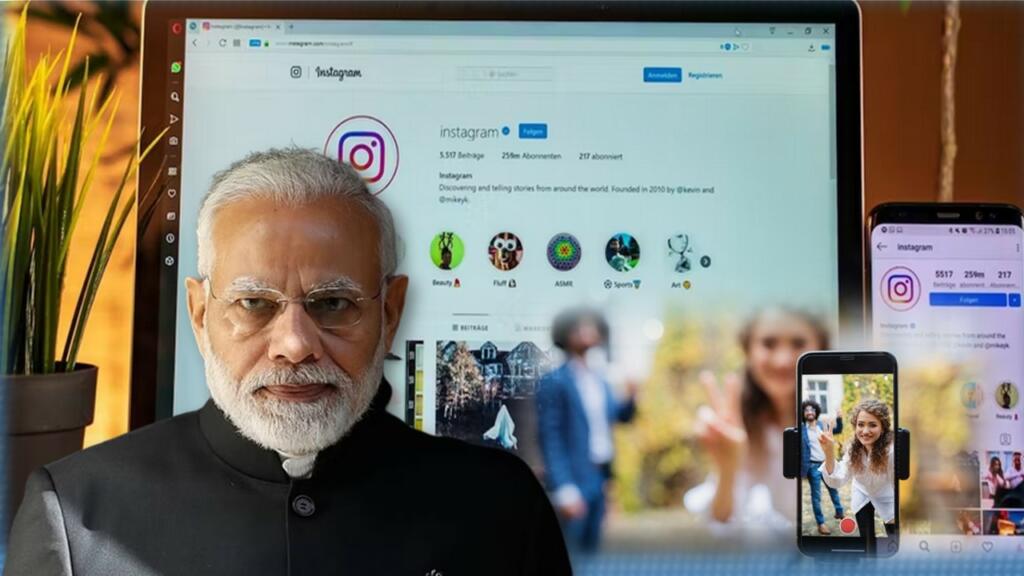This is the modern age. Modern age, in which film stars are continuously losing their relevance. They are being replaced by YouTube wale Bhaiya and Instagram wale Didi from next door. The question is, are they sacrosanct? The last half-decade shows that they are not. That is the reason why they are under the Modi government’s scanner.
Social media influencers under scanner
From now on, social media influencers are required to inform the public about their association with the brand. The public would be aware of their material interests. It includes benefits and incentives, such as monetary or other compensation; free products, including those received unsolicited; discounts; gifts; contest and sweepstakes entries; trips or hotel stays; media bartering; coverage and awards; or any family, personal, or employment relationship.
In the case that they fail to tell the audience about it, influencers will be subjected to both heavy fines and punishment. If caught for the first time, the influencer will have to pay a fine of up to Rs 10 lakh. The endorsers could be prohibited from doing any ads for a year. In subsequent convictions, the payable amount will be increased to Rs 50 lakhs, and the prohibition period will be extended to three years.
Also read: Media loves to abuse social media but it can’t survive without it
Reason for rush towards it
The step comes a bit late but is in tune with changing circumstances. These social media influencers have been reaping the benefits of the cognitive trust people unconsciously develop for them. The thing is that people all across the world have lost trust in the cinema industry regarding product endorsement. Why would they not? Celebrity status comes with more fakeness than anything else.
They look out of the reach of common people and products endorsed by them look like a hyperbole and unrealistic extension of reality. Add their charges to the mix. Imagine paying Shahrukh Khan Rs 5–10 crore for an ad. It has the ultimate effect on the price of a product. All in all, celebrity endorsements is a bad deal for brands.
To cut through this maze, brands resort to social media influencers. These influencers have their own joiners. Carryminati, for example, is primarily popular among young people. Similarly, Ravish Kumar, the new influencer on the horizon, will have people from different age groups and ethnicities.
Add to that transparency factor. While targeted TV ads are based on TRP numbers, which are less precise, the follower and subscriber counts of these social media influencers are clearly visible. Brands approaching them precisely know how many people they can target by paying influencers.
Also read: The Truth Behind Social Media Tips for Investment
Scope of influencer marketing
The final cost ultimately reduces, and the Return On Investment for companies grows. According to a report, for every $1 spent on influencer marketing, brands make $5.2 in return. For every piece of content an influencer generates, brands have to shell out only $174 on average. That is remarkable cost-cutting and helps smaller brands poke a hole in the market share of established ones. No wonder, the influencer market industry clocked $16.4 billion in 2022.
India is not far behind. According to a report by Statista, in 2022, the market was valued at Rs 12.75 billion. In 2025, it is expected to reach Rs 24.57 billion. The number could be much more than that since 85 percent of millennials and Gen Z prefer to receive information about products on social media. With smartphone penetration increasing at an astronomical pace, influential marketing is eye candy for large companies as well as startups.
Also read: Dear haters, trolls and fake news peddlers, now government can block your social media handles
Right step at right time
This is where the sector runs into problems. Today, every kid has a favourite YouTuber and Instagram influencer. While big brands have a reputation to lose, a lot of small brands are just there to earn money. These companies manufacture products like protein shakes, make-up, clothes, shoes, and electronics, among others. They’ve only been on the market for a few years.
They pay influencers to sell their crappy products. In a fixed time period, enough sales give them incentive to run away by shutting the shop. At the end, it is the consumer who stands to lose, since they won’t spend time running to court.
The new mechanism will make it tough for these influencers to sell anything without repercussions. We are at a time when even celebrities are being careful; why shouldn’t influencers be?
Support TFI:
Support us to strengthen the ‘Right’ ideology of cultural nationalism by purchasing the best quality garments from TFI-STORE.COM
